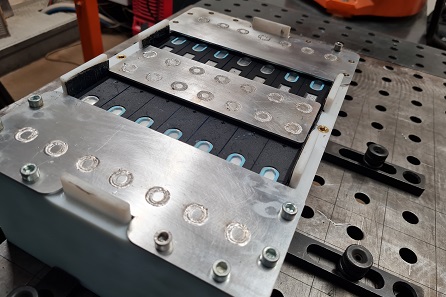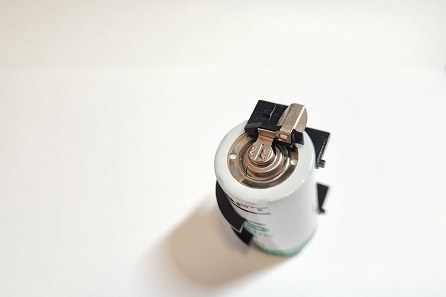Laser welding ensures minimum temperature loading of materials. Together with the use of 2D scanning systems, it is possible to provide a high number of welds (battery block welding) with relatively complex welding trajectories in a very short time.
The demands for ever increasing range, efficiency and safety of electric vehicles bring with it the need to join individual battery cells with highly electrically and thermally conductive materials such as aluminium or copper, which are also very thick (up to 8 mm). Laser welding in this respect brings very robust and repeatable joining due to the concentration of large amounts of energy in a very small area. One example is shown in the figure, where laser welding of 2 mm thick aluminium busbars to prismatic cells is in progress.


